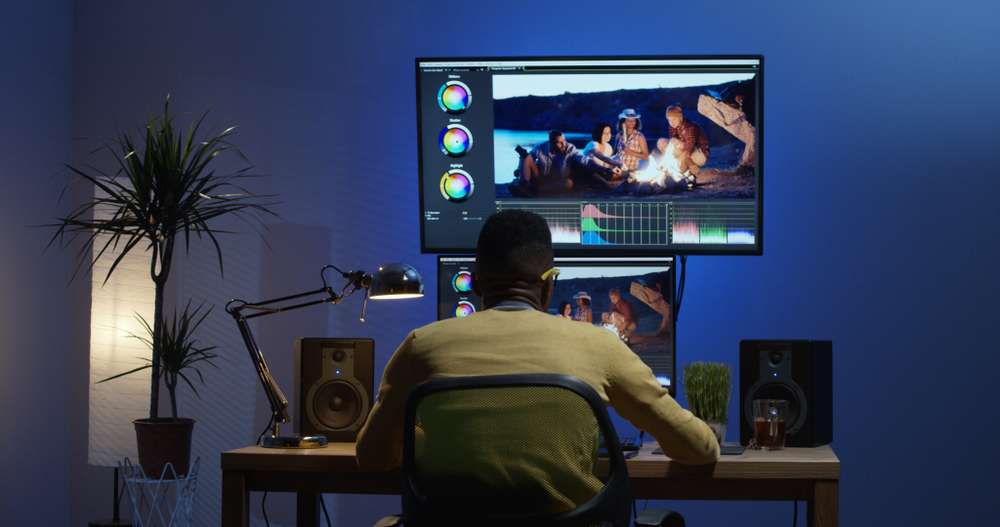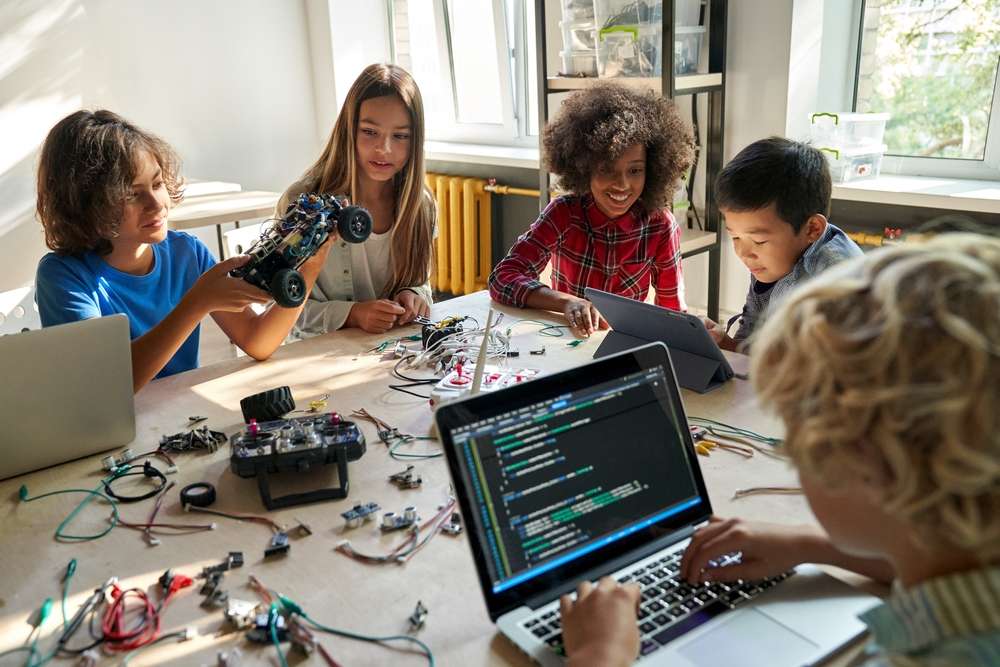
Introduction to the Concept of User-Generated Content
User-generated content (UGC), as its name implies, refers to any type of content that is created by users or consumers rather than by organizations or companies. This content can come in various forms such as blog posts, wikis, discussions, posts, chats, tweets, podcasting, pins, digital images, video, audio files, advertisements, and other forms of media that are created by users of an online system or service. The most common platforms that facilitate user-generated content include social media websites, blogs, and discussion forums.
UGC has steadily become a central force in the digital world, dramatically altering the way information is created, distributed, and consumed. Previously, content was produced by a relatively small number of individuals or organizations, such as journalism outlets or publishing companies. However, the advent and proliferation of the internet and digital platforms has democratized the process of content production. Now, virtually everyone with a digital device with an internet connection can be a content producer, sharing their ideas, thoughts, experiences, or insights.
The growth of UGC is underpinned by the increasing participation of users who wish to voice their opinions, share their experiences or express their creativity. In contrast to traditional content, UGC is often seen as more genuine, relatable, and engaging making it high influential particularly in shaping views and behaviours. For instance, a well-informed product review by a fellow consumer could substantially influence the purchasing decision of others who read it. Likewise, an individual’s travel or food blog could help shape the preferences and choices of their audiences.
UGC also fosters a sense of community, with users often forming connections over shared interests, values, or experiences. Audiences feel more intimately connected with content creators, forming a community that encourages interaction and engagement such as liking, commenting, sharing, or co-creating further content.
Moreover, the power and influence of UGC extend beyond individual connections and communities. It shapes the media landscape, influences business strategies and marketing practices, and plays a critical role in shaping public opinion. In the context of education, UGC could also aid in promoting an interactive learning atmosphere, imbuing education practices with increased collaboration, creativity and critical thinking, which would be further explored in the upcoming sections.
In sum, user-generated content is revolutionizing the way we consume and create information. It encourages interaction, engagement, and active participation, breaking down the traditionally unilateral system of content production and consumption. With UGC, every user potentially becomes a co-creator, each with the power to contribute to the global digital narrative. As we move forward, the fusion of this remarkable concept with social learning promises to transform numerous sectors, not least of all, education. This exploration begins in the next section, with a review of the rise of social learning.

The Rise of Social Learning
In tracing the rise of social learning, one must first understand its definition. Social Learning Theory, as proposed by psychologist Albert Bandura, centers on the idea that learning occurs through observation and interaction within a social context. In essence, this approach to education emphasizes the role of collaborative and participatory learning where knowledge is distributed and shared among the members of a group, leading to an enriched learning experience.
The infiltration of technology into our everyday lives has opened up boundaries and created a world where various learning techniques, including social learning, have significantly escalated. Social learning, as we know it today, is changing the traditional landscapes of education by incorporating digitally advanced platforms that shape the way students acquire knowledge. Today, with the advent of social networking sites like Facebook, LinkedIn, and Twitter, along with learning-specific platforms like Coursera, Udemy, or Khan Academy, there’s a greater implementation and acceptance of social learning practices.
The growth of social learning is fueled by the changing attitudes and demands of today’s learners who, in this digital era, are looking for more than just the traditional classroom experience. They seek interactive, immediate, and personalized learning experiences. Social learning meets these needs through peer-to-peer learning, community formation, collaboration, instant feedback, and dialogue among students and teachers alike.
For example, in the professional workspace, it is not uncommon now to find online training programs where employees educate and learn from each other through discussion forums, webinars, and other interactive platforms. Similarly, in schools, students learn about various topics through group projects, online discussions, and shared documents on platforms like Google Drive or Microsoft Teams. The idea is not just to learn but to create a contextual and social learning environment that encourages the free exchange of ideas and knowledge.
But perhaps the most significant attribute and proof of the rise of social learning lies in its potency to weave in with other forms of learning techniques, like user-generated content. It not only combines the best attributes of traditional learning and modern technology but also enables learners’ active contribution. This creates a robust educational model that caters to the diversity of learning needs and paces in ways the traditional system cannot cater to.
In conclusion, the rise of social learning marks the evolution of the educational landscape into a more interactive, learner-centric, and dynamic one. This shift, while encompassing some challenges, offers untapped opportunities to improve learning outcomes and reveal the immense potential of social learning in education. However, to truly harness its power, there needs to be a fusion with user-generated content, which further enhances, enriches, and personalizes the learning experience for each student.

The Convergence of User-Generated Content and Social Learning
The fusion of user-generated content and social learning perfectly embodies an educational evolution where learning is no longer confined to a classroom or even a physical location. This chapter explores how these education forms intersect, leading to a new landscape imbued with knowledge sharing and rich peer to peer interactions that significantly impact the way students learn.
User-generated content (UGC), which includes texts, images, videos, and more, created and shared by users of a platform, furnishes a revolutionary avenue for knowledge dissemination. Sites such as Wikipedia, YouTube, and numerous educational forums and blogs exemplify UGC, providing data on a massive array of topics that anyone can access. Learning is no longer solely about acquiring knowledge from a teacher or a textbook; it involves actively participating in knowledge creation and dissemination.
Social learning, on the other hand, focuses on observation, imitation, and modeling to understand specific behaviours and gain a broader understanding of the phenomena. It presents an engaging platform for social interaction and collaborative learning. With the rise of social networking sites and virtual classrooms, social learning has taken on a significant role in knowledge acquisition, providing learners with multifaceted perspectives.
The intersection of UGC and social learning is a natural result of technological advancements and digitization invading the education sector. A student can create a blog post or a video explaining a difficult concept —that’s UGC. Suppose this material circulated via social media or inside a virtual classroom where it’s discussed, commented upon, and critiqued—that’s social learning. The end result is a dynamic, flexible learning environment promoting knowledge reuse, peer conversations, and most importantly, critical thinking skills that professional world values.
This convergence also capitalizes on the diverse experiences and expertise of learners. As each person generates content based on their understanding and experience with the subject matter, multiple unique insights emerge. This robust collection of perspectives encourages discussions, debates and challenges traditional one-dimensional learning.
The intersection also democratizes education, as user-generated content makes knowledge accessible to many, often free of charge. Plus, social learning allows learners to interact directly with peers and experts worldwide, making education a flexible, social, and engaging process.
One of the notable platforms that epitomize this intersection is Massive Open Online Courses (MOOCs). They provide educational content generated by professionals and allows learners globally to access it. The discussion boards promote social learning as learners interact, share perspectives, and discuss the material, enriching their comprehension.
There is no doubt about the immense potential this convergence pack. However, like any disruptive change, challenges also get tagged along. The following chapters will delve into the implications of this convergence for classroom learning, changing the educator’s role, the benefits and obstacles it brings, and the future of education in this new tech-led era. Its potent influence suggests that UGC and social learning’s intersection will be a vibrant strand in the education sector evolution, worthy of careful exploration and thoughtful implementation.

Implications for Classroom Learning
The fusion of user-generated content and social learning brings multiple implications for classroom learning. The traditionally understood role of classrooms as spaces primarily for instructor-led, synchronous learning begins to evolve as these two elements intertwine. With this fusion, classrooms can transform into dynamic, organic, and collaborative spaces where knowledge creation and sharing become central.
When students have the power to create their own content, they become more than passive recipients of information. They become designers and creators, expanding their critical and creative thinking skills. Whether creating videos, presentations, blogs, or other forms of content, students are no longer just learning about topics; they are deeply engaging with them. This active engagement enhances knowledge retention and promotes a deeper understanding of the topics themselves.
For instance, during a science project, instead of just learning from a book, students can create their own explanations, models, or experiments and share them with their peers. This creates a dynamic, interactive, and student-led learning atmosphere.
In this new classroom environment, spurred by the fusion of user-generated content and social learning, collaboration shapes the learning process. Students collaborate in creating, sharing, reviewing, and refining content, a process that mirrors real-world team projects. Communication, teamwork, and feedback skills are honed, offering real-world applications that extend beyond the classroom.
Furthermore, user-generated content introduces diversity into the classroom. Leveraging the unique experiences, perspectives, and knowledge of each student brings varied and rich content that enriches the learning experience. Learning becomes more inclusive as it values and harnesses the unique input from every student.
Peer-reviewing and commenting on user-generated content allow students to learn from each other. In the process, they engage in exploratory discussions, critiques, and knowledge-building exchanges. This form ofpeer feedback can be more relatable and well received by students, enhancing the learning process.
However, alongside these benefits, a potential challenge arises, which concerns the accuracy and reliability of user-generated content. In an educational setting, it is crucial to ensure that the content produced by students is factually correct and of a high educational standard. Therefore, a validation process led by the teachers or facilitated through peer-reviewing is essential to maintain quality educational outcomes.
In general, integrating user-generated content along with social learning can broaden the perspective of what constitutes a “valuable learning source.” It’s not just textbooks and lectures, but also peer-created content and social interactions that create a more holistic, student-centered learning experience.
These implications suggest an exciting shift towards a more participatory learning culture. However, successful integration requires thoughtful planning and preparation from educators for this fusion to be implemented effectively. Training teachers to facilitate and guide this new learning process, developing a balanced assessment system, and encouraging a culture of respectful and constructive feedback among students are all critical to this educational evolution.

Changes in the Role of the Educator
As we navigate through the intersection of user-generated content and social learning, we inevitably come across changes in traditional roles, particularly the role of the educator. It used to be that teachers were primary sources of knowledge, but with the Internet democratizing access to information and students being able to contribute and learn from each other through user-generated content, the teacher’s role is evolving.
With this fusion, the educator is no longer simply a source of knowledge, but rather a facilitator. They are guides who aid students in their learning journey, helping them handle the limitless sea of information and use it responsibly. They enable critical thinking, challenge students to question, analyze, and discern credible from less credible sources. Hence, learning becomes interactive and dynamic instead of the passive transfer of knowledge from one person to another.
Moreover, educators need to shift from being leaders to being co-learners. In an environment filled with user-generated content, knowledge is continuously evolving. Teachers and students are both part of creating and updating this knowledge base. This setting invites more collaboration and the use of technology is essential to manage and encourage this practice. The image of the classroom where one leads and the rest follow is replaced by a cooperative ecosystem where everyone is a student and a teacher at the same time.
Another significant change comes in the form of assessing. With the nature of user-generated content, the conventional grading system may not wholly apply. Assessment needs to be more dynamic and reflective of the process as opposed to just the end result. It’s more about critical and creative thinking skills, the ability to collaborate, and students’ engagement with the online community.
From a logistical standpoint too, the fusion prompts changes. Since user-generated content can come in a variety of formats – from blogs, vlogs, podcasts to social media posts, teachers should also be equipped with the digital literacy to handle these various platforms effectively and advice students on presentation and safety.
In sum, in this blend of user-generated content and social learning, the educators are transformed. They’re no longer just gatekeepers of knowledge but become facilitators, co-learners, and guides in this digital landscape. This change is not just necessary but vital to keep education relevant and rich in the age of the Internet. The challenge for teachers now and in the future will be to continue adapting to these constant changes and embracing this evolution for the betterment of student learning.
Benefits and Challenges of this Fusion
The fusion of user-generated content and social learning certainly offers tremendous potentialities when it comes to the landscape of education. However, just like all other innovative tools or strategies, it also presents its unique set of challenges.
One remarkable benefit of this integration is the instantiation of a democratic learning process. It encourages students to seek out, create, and share knowledge instead of being passive recipients of whatever is given. The classroom becomes more student-led, as every learner brings unique perspectives and resources into the discussion. This kind of collaborative learning fosters creativity, critical thinking, and problem-solving. In a society that increasingly values these skills, incorporating them into everyday education holds promising outcomes.
Moreover, using this blend can be particularly engaging and motivational. Many students naturally gravitate towards digital technology and social media, and incorporating these elements into education can make the learning experience more enjoyable and personally meaningful. It also mirrors the reality of today’s digitalized society, equipping students with the skills necessary for success in this environment.
The blending of user-generated content and social learning also introduces students to digital responsibilities such as digital citizenship. This encourages students to use digital platforms in a mature and responsible manner, which is incredibly relevant as we continue to progress in this digital era.
At the same time, there are challenges and potential risks associated with this fusion. One major concern is digital divide or inequality. Not all students have the same access to technology and digital tools, which can lead to uneven learning opportunities. It’s crucial for educators to ensure that resources are accessible to all students and that nobody is left behind.
Additionally, while user-generated content can be a valuable learning tool, there can be issues surrounding the validity and reliability of information. With the ease of creating and sharing content, there is room for misinformation or low-quality resources. Therefore, teaching students to critically evaluate these resources becomes paramount.
Privacy issues represent another challenge. When students are creating and sharing content online, they may inadvertently expose personal information. Schools must be vigilant about protecting student privacy, and it may be necessary to implement strict guidelines concerning what kind of content is appropriate to share in a learning community.
Lastly, the role of the educator in this type of learning environment can be ambiguous. When students are more independent and taking charge of their own learning, where does the teacher fit in? Instructors may feel overwhelmed or unprepared to take on this new role which calls for facilitating, guiding, and actively participating in the learning process rather than dictating it.
In summary, the fusion of user-generated content and social learning carries both opportunities and obstacles. Harnessing its potential while minimizing its pitfalls requires a delicate balance, understanding, and adept planning. Carried out mindfully, it can undoubtedly offer an innovative and engaging learning experience. However, without due caution, it can also lend itself to problems such as misinformation, a lack of digital equity, and privacy concerns. It thus becomes the responsibility of educators and institutions to shape this powerful tool in a way that truly revolutionizes education while positively safeguarding the interests of the learners.
Future Outlook for Education and Technological Integration
As we delve deeper into the 21st century, surrounded by a digital landscape that is evolving at a rate faster than ever before, the fusion of user-generated content and social learning has high potential to redefine traditional educational models. Futurists are considering the proliferation of this innovative blend and how it may shape teaching and learning practices.
For starters, a primary transformation will be the shift towards more learner-centered education, a model already gaining traction today. Driven by user-generated content, education will become increasingly personalized. Learners will be able to learn at their own pace, through methods and on topics that align with their interests and goals, which can significantly improve engagement and retention.
Moreover, learning will become a continuous, lifelong journey, not just confined within the walls of a classroom or an institution. Technology will facilitate learning at any time, any place, creating a continuous learning ecosystem that surpasses the limitations of traditional education models. Learners will have the freedom to explore, learn, and grow beyond the standardized curriculum, leading to more intellectual individuals.
The integration of view-sharing platforms will democratize education, allowing learners from all around the world to share their unique insights and perspectives. This could encourage global collaboration, fostering a sense of intercultural respect and understanding.
However, such a dramatic shift also brings up questions about how these changes can be effectively managed. The augmented role of technology invokes concerns about digital equity. Access to advanced technology and stable internet should not become barriers to education. Efforts would need to be put into ensuring that the benefits of this fusion reach all learners, regardless of their socio-economic status.
Moreover, the changing role of educators would need careful handling. With the paradigm shift towards more independent learners, educators are evolving from being sole content providers to guides or facilitators. This necessitates newer skill sets, including digital literacy, personalization techniques, and the ability to foster an engaging learning environment. Adequate training and professional development opportunities for educators would be crucial.
Additionally, there may be a need for regulations and policies to safeguard the quality and credibility of the user-generated content. There should be mechanisms to ensure the information provided is accurate, reliable, and appropriate for learners.
In conclusion, the fusion of user-generated content and social learning is ushering in a new era in education. It brings the promise of a more personalized, comprehensive, and accessible learning experience. At the same time, it challenges us to reimagine the role of institutions and educators, rethink our designs of learning environments, and reinvent the way we assess learning and achievement.
Despite the challenges, this fusion opens the doors to untold possibilities. Technology, when used judiciously, can be a powerful tool in shaping a future where everyone can learn from anywhere, contributing to a more equitable and inclusive society.


